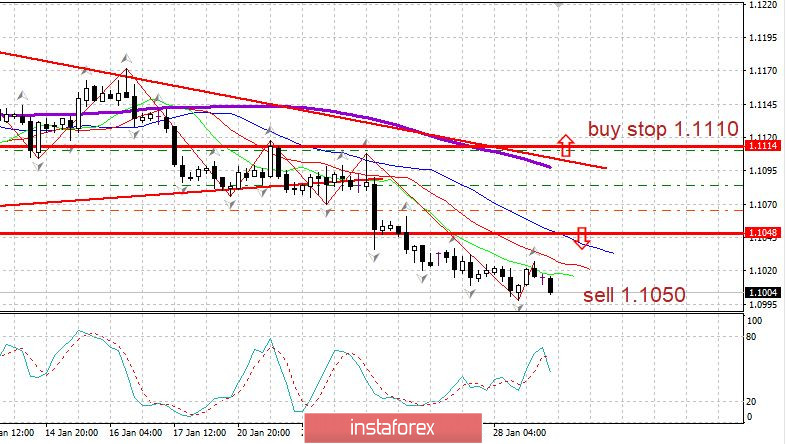
The focus of the markets remains on the outbreak of a new type of flu in China. On the morning of January 20, there were 25 reported new deaths that adds to a total of 132 deaths. Experts expect the epidemic to grow in two weeks' time.
Today at 19:00 UTC, we will hear about the Fed's decision on the interest rates, which is presumably to not change and still remain at 1.625%.
EURUSD:
We keep sales from 1.1084.
Sales are possible from bounces upwards, from 1.1050 and above.
About the Central Bank:
Why is the Central Bank needed? Why can't you issue money to the Treasury?
The main task of the Central Bank is to help the economy in the event of the Great Crisis.
What is a crisis? In a situation of classic crisis, the prices of overheated stocks with inflated prices, real estate with inflated prices fall sharply, unreliable funds and banks burst. Inefficient companies and projects are bursting.
As a result, a significant part of the business is on the verge of bankruptcy with massive job cuts and wage cuts. A sharp drop in demand.
This worsens with the beginning of a negative spiral, that is, a drop in consumer demand leads to a decrease in the production of already quite efficient and healthy companies followed by a new wave of cuts in workers and salaries and then a new drop in demand and so on. This continues down to the negative spiral if not stopped. This is where the Central Bank enters.
The Central Bank sharply reduces the rate to make loans cheap and to support the demand. The Central Bank may launch a massive program of redemption of bonds and shares of the business to stop the wave of falling markets. It also offers emergency loans to large banks, so that the fall of banks does not stop the economy.
This is how the main world central banks acted during the crisis.
This task is followed by its job in cooling down an overheated market in case of inflation growth.
If inflation rises above a certain limit (for the US Federal Reserve this is 2.5%, for the ECB 2-2.5%), the Central Bank begins to raise the rate in order to cool the market. It is gradually raising the rate until the moment when inflation growth stops. And then as the rate of inflation drops, the Central Bank begins to reduce the rate to a neutral level.
The neutral rate level is at the level of inflation. If the Central Bank rate is lower than inflation, it is a soft policy of the bank, and a hard policy if higher.





















